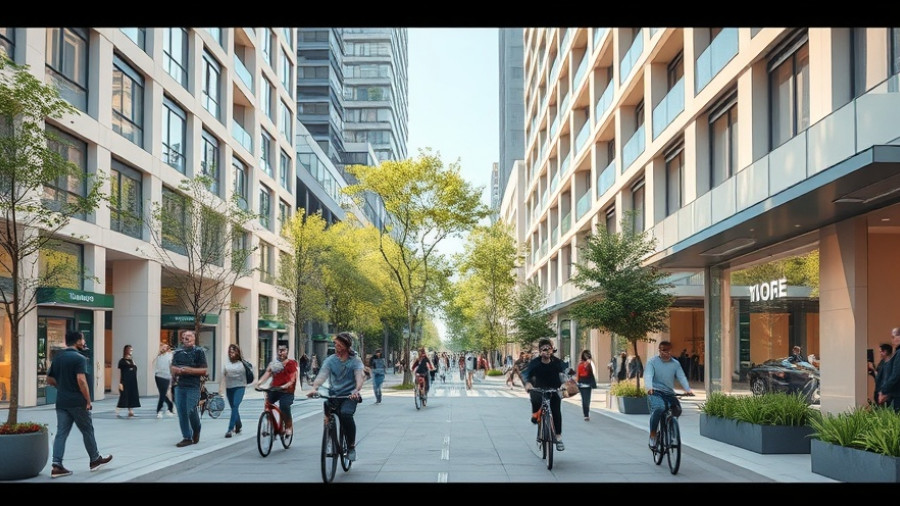
Maslow Capital Fuels Ambitious Abbey Wood Development
In a strategic move to reshape urban living, Maslow Capital has stepped in to provide a pivotal £122 million development finance package for a groundbreaking mixed-use regeneration project in Abbey Wood, South-East London. Spearheaded by Definition Capital, this ambitious endeavor will deliver 487 co-living units, a 110-key hotel, and a re-located PDSA Pet Hospital, thus significantly enhancing the local community's amenities.
The Vision: A New Standard in Urban Living
Maslow Capital’s investment highlights its commitment to supporting innovative residential solutions in the UK, particularly as demand for high-quality, professionally managed rental properties continues to soar. With London’s rental market constrained relative to demand, the new development on Eynsham Drive positions itself strategically within walking distance of Abbey Wood Station, tapping into the connectivity provided by the recently opened Elizabeth line.
Irfan Hussain, director at Definition Capital, emphasizes the importance of this project, stating, "We are pleased to bring forward this ambitious mixed-use scheme for Abbey Wood, combining well-managed rental homes, a high-quality hotel, and community facilities on a single site." This multifaceted approach not only addresses housing shortages but also enriches the local fabric by integrating amenities that cater to the community’s evolving needs.
Unique Challenges and Innovative Financial Solutions
One of the most compelling elements of this project is the financial structuring necessary to navigate its complexities. According to Rickesh Patel, head of real estate at Mantra Commercial, the collaboration between multiple stakeholders was crucial to crafting a finance package that met the project’s unique requirements. “It demanded deep sector understanding and close collaboration between all parties to ensure it was structured appropriately for everyone,” Patel noted. Such cooperation is indicative of the innovative financing solutions that often define successful real estate ventures.
A Look Toward the Future of Abbey Wood
The Abbey Wood regeneration scheme is part of a larger Opportunity Area plan, which outlines the potential for 8,000 new homes and 4,000 jobs. This initiative aligns with London's broader effort to create sustainable urban environments that balance living, working, and leisure. As urban areas continue to grow, the importance of this connectivity and community mix becomes increasingly apparent.
The Role of Co-living in Modern Urban Development
As urban properties evolve, co-living arrangements have emerged as a solution to affordable housing crises, bridging the gap between traditional rental options and communal living. With shared amenities such as lounges and workspaces, co-living units not only offer affordability but also foster community—a critical aspect for many city dwellers today. Rachael Gordon of Maslow Capital remarked, “This scheme adds much-needed capacity with the right specification and amenities, positioning it well for lease-up and long-term rental.”
Expert Insights: Why This Project Matters
The implications of the Abbey Wood development extend beyond mere housing numbers. This project represents a significant step in addressing the regional disparities within London’s real estate market, showcasing a model that combines commercial and residential spaces to create value for investors and residents alike. As the city navigates housing shortages and urban sprawl, such developments will play a vital role in setting the standard for future projects.
Property owners and investors should view this development as a benchmark for future real estate opportunities, considering similar initiatives that integrate community service, connectivity, and residential development. The focus on goodwill alongside profit maximization indicates a shifting paradigm in how developers approach urban projects.
As Maslow Capital’s involvement in this project illustrates, the future of urban development lies not only in building structures but in creating sustainable communities that cater to the diverse needs of their residents.
Conclusion: A Call to Action
For property owners and investors in the UK market, the Abbey Wood development represents an opportunity to engage with a forward-thinking approach to urban living. Staying informed on such developments can aid in making strategic investment decisions that align with market trends. The importance of community-focused projects cannot be overstated, as they not only enhance living standards but also create long-term value for investors.
 Add Row
Add Row  Add
Add 





Write A Comment